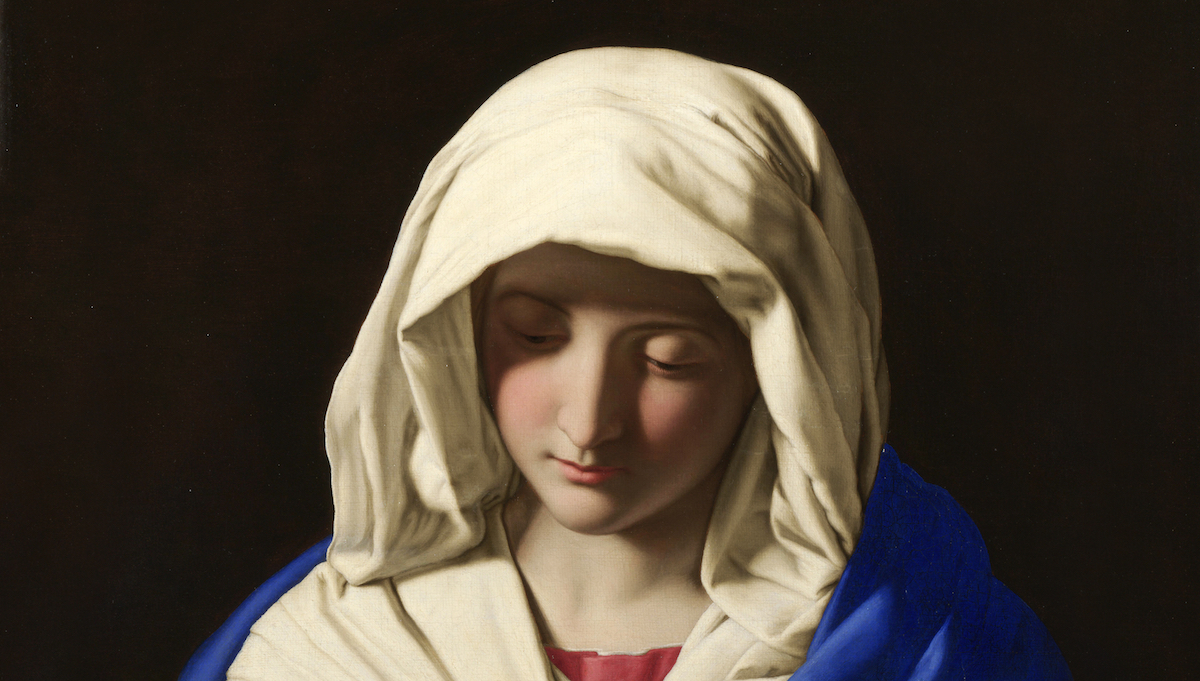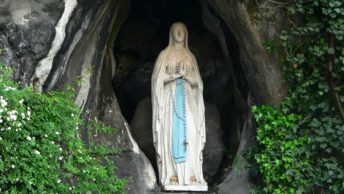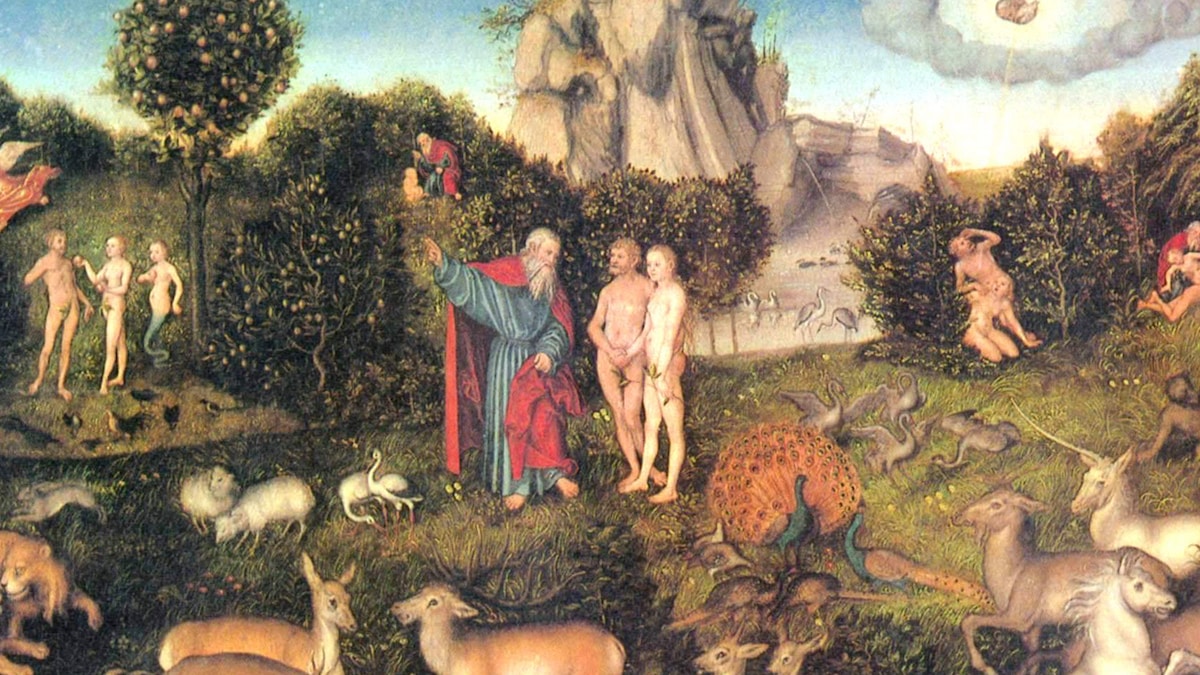St. Bernard of Clairvaux (1090-1153) was a monk and a doctor of the Church. As much as he liked the quiet of his life in the monastery, he was frequently called upon to settle disputes in the Church, such as one time when two men claimed to be pope. He preached against heresy, encouraged a crusade against invading Muslims, and gave advice to popes who saw him as holy and wise.
Bernard was known for his special devotion to the Blessed Mother. He composed the Memorare prayer (“Remember, O most gracious Virgin Mary …”) and knew whatever trial he encountered, the Blessed Mother would take care of him. He had a practice of every time he passed a certain Marian statue in the monastery, he would salute her with a “Hail, Mary.” One day she returned his greeting with “Hail, Bernard.”
Devotion to Mary should be an important component of our spirituality as it was to Bernard’s. She is the one who can lead us to Christ, and intercede for us to obtain the graces we ask. I can think of some beautiful examples of Marian devotion among Catholics whom I have known, including my grandmother Carmella. She prayed the rosary daily and during Sunday Mass. I recall looking at her as a boy and observing how peaceful she was when she prayed. Unfortunately, it was not until later in life that I developed a devotion to the Blessed Mother myself.
But how do you incorporate Marian devotion into a book on mercy? We can because she is a “Mother of Mercy,” or as Pope Francis said, a “Mother of forgiveness.” During the Year of Mercy, the pope recited the words of an ancient hymn: “Hail Mother of mercy, Mother of God, Mother of forgiveness, Mother of hope, Mother of grace and Mother of holy gladness.” He went on to explain that for generations we have sought her intercession and consolation.
Pope Francis explained how critical it was to understand “forgiveness.” The pope went on: “A person unable to forgive has not yet known the fullness of love. Only one who truly loves is able to forgive and forget. At the foot of the Cross, Mary becomes for all people the mother of forgiveness, as she follows in the example of her Son who forgives those who are killing Him.”
The pope continued, “For us, Mary is an icon of how the Church must offer forgiveness to those who seek it. The Mother of forgiveness teaches the Church that the forgiveness granted on Golgotha knows no limits. Neither the law with its quibbles, nor the wisdom of this world with its distinctions, can hold it back. The Church’s forgiveness must be every bit as broad as that offered by Jesus on the Cross and by Mary at His feet. There is no other way.”
We are blessed, according to Pope Francis, because Mary offers us a “three-fold gift of her son: hope, grace and holy gladness. The gift that Mary bestows in offering us Jesus is the forgiveness which renews life, enables us once more to do God’s will and fills us with true happiness. This grace frees the heart to look to the future with the joy born of hope.”
The pontiff emphasized the importance of forgiveness as “the true antidote to the sadness caused by resentment and vengeance by bringing peace and serenity by freeing the heart from resentment.”
We were told by the pope, “let us allow her to lead us to the rediscovery of the beauty of an encounter with her Son Jesus. Let us open wide the doors of our heart to the joy of forgiveness, conscious that we have been given new confidence and hope, and thus make our daily lives a humble instrument of God’s love.”
ST. JUAN DIEGO
Mary’s love, compassion and mercy can be seen in the story of St. Juan Diego (1474-1548) and the apparitions of Our Lady of Guadalupe. When Hernán Cortés and the Spanish conquistadors arrived in present-day Mexico in the early 1500s, they encountered a materially advanced yet brutal Aztec culture which practiced human sacrifice on a wide scale. Archaeologists digging in and around Mexico City are still uncovering walls and towers made of human skulls from their ritual sacrifices.
With the help of other Indian tribes oppressed by the Aztecs, the conquistadors overthrew the Aztec leadership and put an end to the practice of the Aztec religion and its sacrifices. Franciscan missionaries arrived to introduce to the indigenous peoples the Gospel of Jesus Christ, and the new religion began to take root.
Juan grew up in the Aztec religion but was one of the first to convert to Catholicism through the influence of the missionaries who taught him about “Our Lady and her precious Son.” On December 9, 1531, Juan was on the way to Mass when he encountered a beautiful young woman with the appearance of a native princess and calling him by name in his own language. She said she was the Virgin Mary, and she told him to ask the local bishop, Bishop Zumarraga, to build a chapel in her honor on Tepeyac Hill, which had previously been the site of a pagan temple.
Juan agreed and went to see the bishop, but the bishop was skeptical. After some back and forth the Blessed Mother gave Juan some Castilian roses (which she helped arrange in his tilma, or cape, with her own hands) for the bishop (like what was grown in Castile, Spain, but not native to Mexico and at the wrong time of year for roses to bloom). But ultimately not only did she supply flowers, but her famous image of Our Lady of Guadalupe on Juan’s tilma, present in many of our churches today. Her appearance was a real boon to the efforts of the missionaries; within a decade nine million Indians had converted to Catholicism, far more than had been lost to the Church in Europe after the Protestant Revolt. In contrast to the vengeful gods of the Aztec religion which demanded human sacrifice on a massive scale, they embraced the Christian religion that taught:
John 3:16 “For God so loved the world that he gave his only Son, that whoever believes in him should not perish but have eternal life.”
Mary came as a compassionate, caring mother who wanted to lead the people of the New World out of darkness to the loving embrace of her Son. She showed mercy on a people who had suffered much under the rule of the Aztec Empire, and pointed them into a new direction which led to eternal life.
BEHOLD YOUR MOTHER
As Jesus hung dying on the cross, He said: “Behold, your mother!” (John 19:27)
Doesn’t a mother want the best for us? Our spiritual mother stands and watches us, interceding as we carry our own crosses. She is ever vigilant as she unconditionally loves us, always watching and interceding for our intentions. She greatly desires us to repent of our sins, and to love God with all our heart and soul.
Mary has tremendous influence over her Son, Jesus. She tells him at Cana,
“They have no wine.” (John 2:3) And, even though He said, “My hour has not yet come” (John 2:4), He heeds her suggestion and turns water into wine and saves their hosts from social embarrassment.
Mary is our spiritual mother and needs to be an integral part of our faith life and spirituality. We learn from Hebrews that only through faith can we truly please our Lord Jesus. Mary is the perfect example of the personification of faith. When the angel Gabriel appeared to her, she never doubted that it was going to happen. She showed tremendous faith in Luke 1:38:
“Behold, I am the handmaid of the Lord; let it be to me according to your word.”
This complete faith and trust had Mary believing the angel’s proclamation that her cousin Elizabeth was with child in her sixth month. This led Mary to take the long and difficult trip at a young age to see Elizabeth.
Our Blessed Mother is at the center of mercy. For some of us, we feel it is nearly impossible for us to show mercy to ourselves or others who have hurt us. Where there is great healing, there is Mary. We can feel her presence as she intercedes for us through her Son Jesus. We see so many miracles at Lourdes, Fatima and at other Marian shrines throughout the world. Draw upon her love and intercession to pray for healing of forgiveness and other forms of healing. The love of our mother adds in the realization of Mark 11:23:
“Truly, I say to you, whoever says to this mountain, ‘Be taken up and cast into the sea,’ and does not doubt in his heart, but believes that what he says will come to pass, it will be done for him.”
ST. CATHERINE LABOURE
St. Catherine Laboure (1806-76) was a French Daughter of Charity to whom the Blessed Mother appeared in her convent chapel and asked her to have the Miraculous Medal made. The Blessed Mother was seated in a chair and Catherine kneeled beside her with her hands in Mary’s lap—the only apparition I can recall in which the person receiving the apparition actually physically touched Mary!
Catherine did as Mary requested and the Miraculous Medal was popularized and was an instrument in many conversions. It was only widely known that Catherine received apparitions after her death; 57 years after she died her body was exhumed and found to be incorrupt.
There is much we can learn from Catherine’s life—she practiced heroic virtue while engaging in commonplace duties—but for this book I’d like to point out one of her characteristics: her childlike devotion to the Virgin Mary. At age 9, Catherine’s mother died. She was devastated. Standing before a statue of the Virgin in her home, she famously declared, “Now, dear Blessed Mother, you will be my mother.”
While honoring our own mothers, let us follow Catherine’s example and take Mary as our spiritual mother, a mother of mercy, kindness and tremendous intercessory power before the Lord. Let us pray our rosary daily, and seek her assistance in all we do, both big tasks and small. She loves us, and is an invaluable aid in our journey to the Lord.








